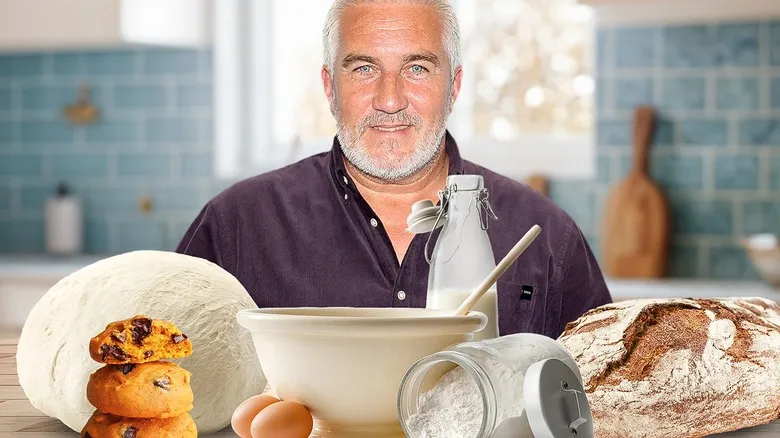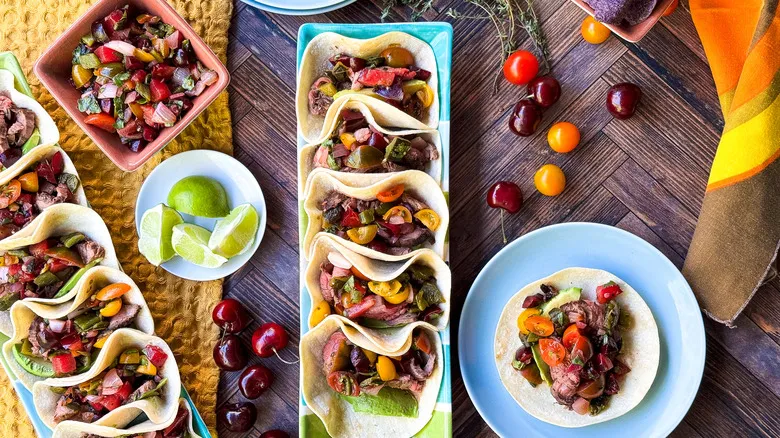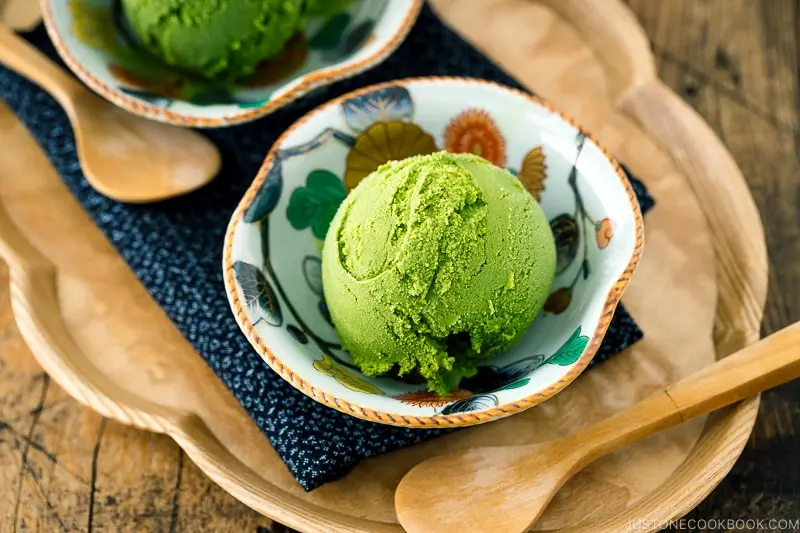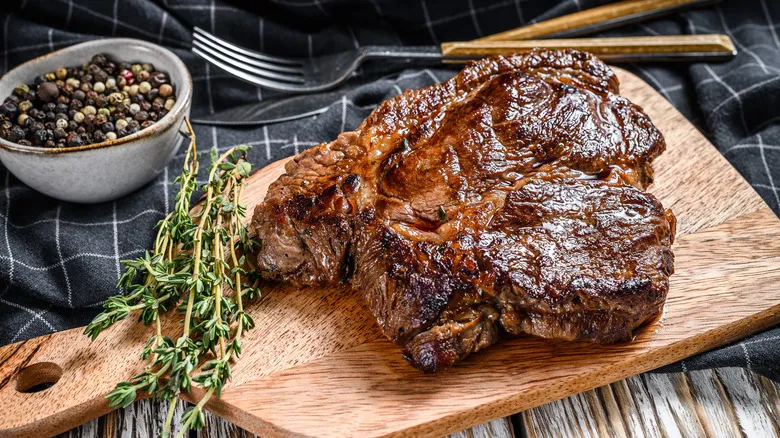Use steam to bake perfectly crusty bread
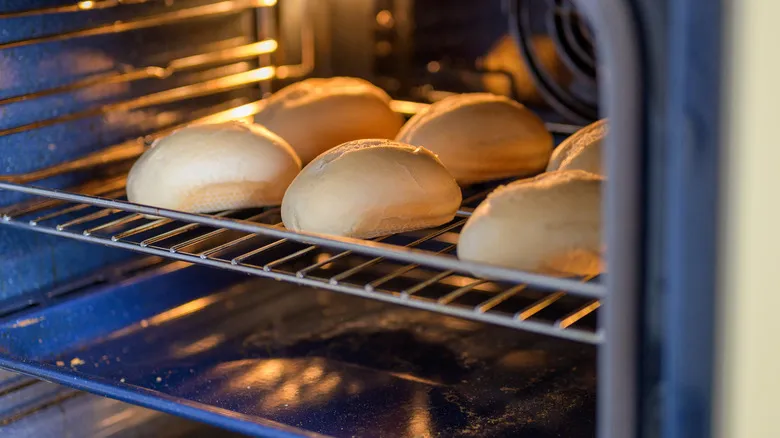
Baking bread is a blend of science and artistry. It requires precise measurements and specific interactions with heat. If you overlook even a single detail, problems are likely to arise. Precision is essential, yet even when you meticulously follow a recipe, achieving that ideal crust can be challenging for many bakers. However, Paul Hollywood is an exception. He knows exactly how to achieve the perfect crust on any bread, and it involves a remarkably simple additional step in the oven.
Paul Hollywood suggests placing an empty roasting tray on the lower rack of your oven while it preheats. Once the oven reaches the optimal temperature for baking bread (approximately 425°F), place your bread inside. Simultaneously, pour cold water into the roasting tray. The temperature difference creates a steam effect, resulting in a beautifully light crust that resists tearing. So, if you're struggling with crusty breads, this quick and straightforward solution might be just what you need to succeed.
Avoid soggy bottom pie crusts by pre-baking them without any filling
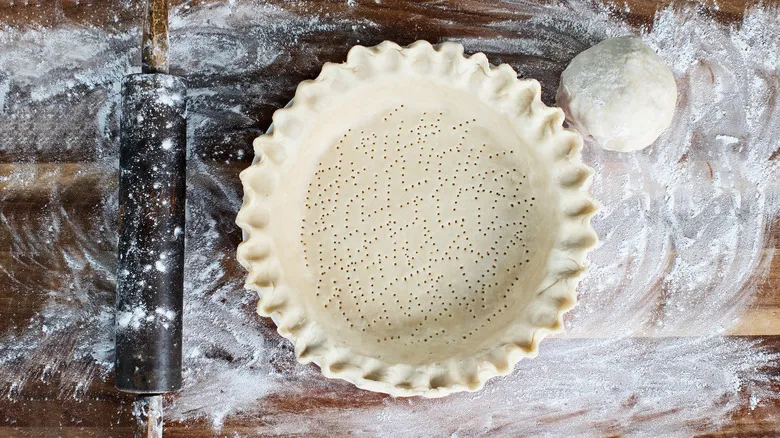
Whether you choose to make your pies with just a bottom crust or add a top layer as well, the last thing you want is for the bottom to turn out soggy. Unfortunately, this is a common issue, especially if we neglect Paul Hollywood's advice to pre-bake the bottom crust before adding any filling. This straightforward step allows the bottom crust to become nicely crisp before a moist filling seeps in, which can lead to sogginess.
While a quick pre-bake seems like common sense, sometimes it takes a professional like Hollywood to emphasize its importance. To avoid the dreaded soggy bottom in your pies, simply give the crust a head start in the oven. After placing your crust in a pie pan, cover it with plastic wrap or parchment paper and weigh it down with dried beans or rice to keep it in place while baking. The baking time will vary based on your recipe (blind bake, partial blind bake, par-bake, or no-bake), but regardless of what you're preparing, pre-baking the bottom crust is well worth the effort.
Roll pizza dough extra thin and bake it at a super high temperature
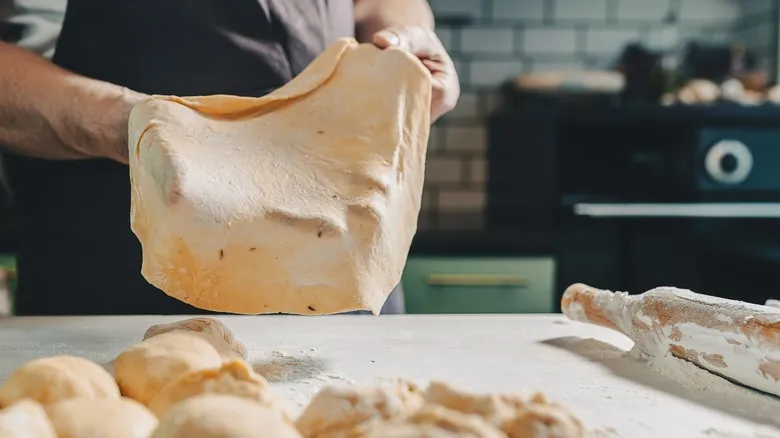
To create the ultimate homemade pizza, Paul Hollywood suggests making an extra thin crust and baking it at a very high temperature. While it might be tempting to opt for a thicker crust—especially if you enjoy Detroit, Sicilian, or Chicago-style pizzas—Hollywood insists that an extra thin crust is the key to achieving the perfect combination of chewiness and crispiness. Additionally, baking your homemade pizza at a high temperature is crucial. Although your home oven can't compete with a professional or specialized pizza oven, you can still make delicious pizza by following his advice.
Paul Hollywood also warns against using a rolling pin on pizza dough, as it can lead to tough, unyielding dough—something no one desires. If the idea of tossing your pizza crust like a professional chef feels daunting, don’t fret. Most home cooks prefer not to risk their precious dough in this way. Instead, gently stretch the pizza dough outward and shape it slowly to maintain the ideal texture.
Add salt to an egg wash for the ideal golden, glossy finish
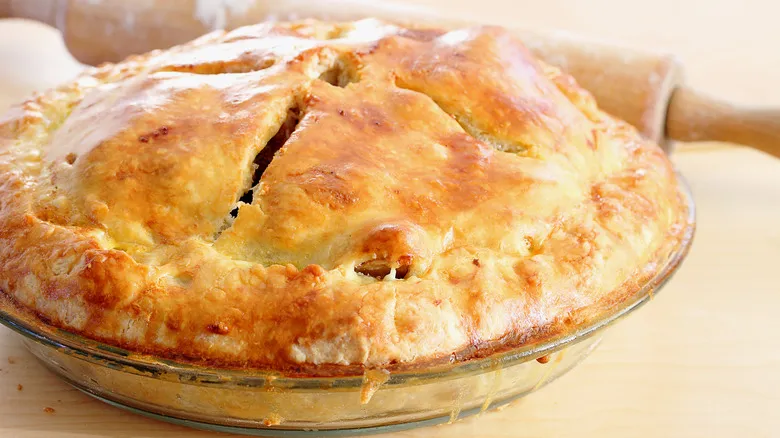
Applying a light egg wash to baked goods is essential for achieving a beautiful, golden, and glossy finish that is visually appealing. Whether you're preparing pastries, pies, or buttery croissants, egg washes should be your go-to technique. Many people believe that creating an egg wash is as easy as cracking an egg and brushing it onto the dough. However, Paul Hollywood suggests adding a pinch of salt to the mixture, and you should consider doing the same for several reasons.
Firstly, incorporating salt into your egg wash enhances the flavor of your baked goods. It helps to balance sweet and savory elements, boosting the overall taste, much like in other culinary creations. A salty egg wash also amplifies the delightful aromas that come from baking, and we all know that the scent plays a significant role in making baked goods irresistible. The improved flavor and aroma alone are compelling reasons to try Hollywood's tip, but adding a touch of salt also results in a more uniform finish. Consequently, you'll achieve the desirable golden, glossy hue that everyone loves.
Fold and press dough for the ideal sourdough texture
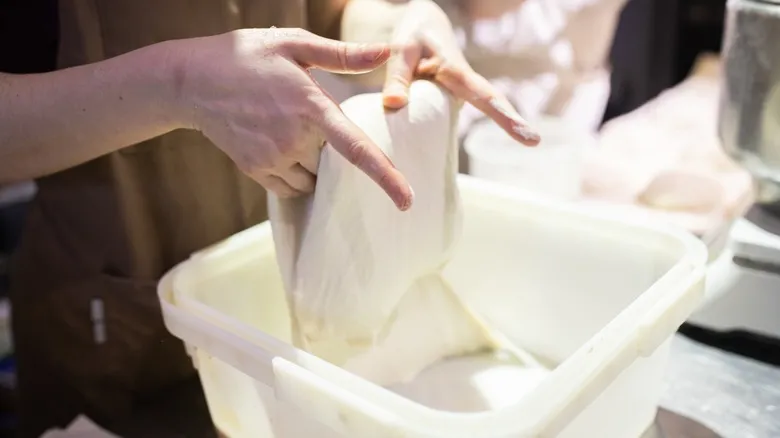
As you may already be aware, making sourdough from scratch can be quite challenging. Cultivating a sourdough starter and crafting the ideal loaf requires significant effort from bakers. There are numerous steps and countless details to consider when preparing sourdough, but Paul Hollywood's folding method is an excellent starting point for mastering the finer points.
Paul Hollywood suggests mixing the sourdough in a bowl with a bit of oil. Begin by folding the edges of the dough back toward the center in a downward motion. Additionally, make sure to work in a circular motion, rotating the bowl as you proceed. Once your hands are no longer sticky, allow the dough to rest for 10 minutes. After that, repeat the process eight more times. Hollywood firmly believes in this folding and resting technique, which is compelling enough to convince almost anyone without further elaboration. However, for those who seek a deeper understanding, this method results in a wonderfully light and airy texture—delicious!
Add an extra piece of chocolate to the center of cookies to make them extra gooey
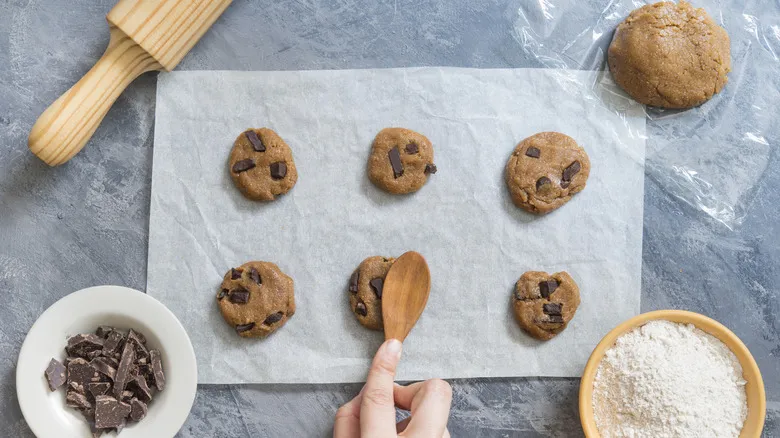
Chocolate chip cookies are a timeless favorite for both kids and adults. You don’t need to be an expert baker to whip up a batch of these irresistibly sweet and often gooey treats. This simplicity is likely one of the reasons for their widespread appeal. Of course, the rich chocolate flavor plays a significant role, but they are incredibly easy to make, no matter your baking experience. However, there are a few tips to elevate their deliciousness, and one of the best tricks for achieving ultra-gooey chocolate chip cookies comes from renowned baker Paul Hollywood.
Hollywood’s secret for creating extra gooey chocolate chip cookies is both straightforward and effective. After placing your cookie dough on the baking sheet, make a small indentation in the center of each mound of dough. You can use a tiny spoon, but your finger works just as well. Next, insert a small piece of chocolate and reshape the cookie to cover it, hiding the chocolate in the center. Once baked, breaking open one of these cookies will reveal melted chocolate oozing from the center, especially if enjoyed while still warm. Now that’s delicious!
Weigh your ingredients to achieve the perfect bake
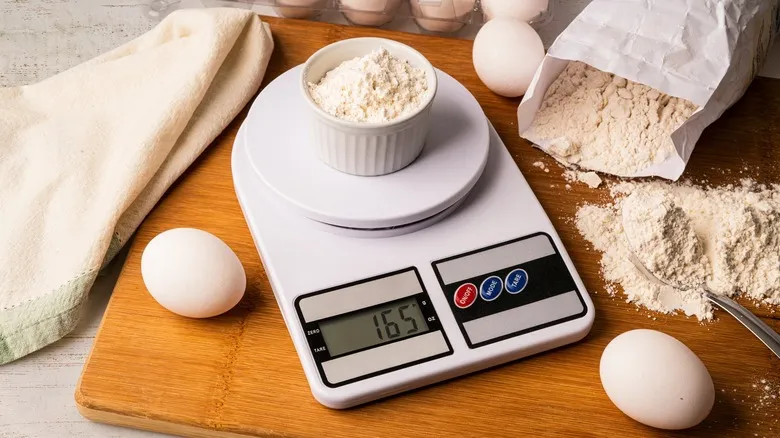
Baking is a precise science, and achieving optimal results requires accuracy. While this may seem daunting, expert bakers like Paul Hollywood understand that weighing ingredients is a reliable method for ensuring success. Although using a scale adds an extra tool to your kitchen, its accuracy is invaluable for creating perfectly baked treats.
When it comes to ingredients such as flour, measuring cups simply cannot compete with the precision of a digital scale. Flour tends to settle in the bag, making it easy for a measuring cup to yield inconsistent or inaccurate measurements. A scale removes the uncertainty and eliminates the need to aerate your flour beforehand. Additionally, eggs can vary significantly in size and weight, making a scale essential for precise baking. By using a digital scale, you not only enhance the quality of each bake but also enable yourself to consistently reproduce successful results.
Don't over or under work your dough
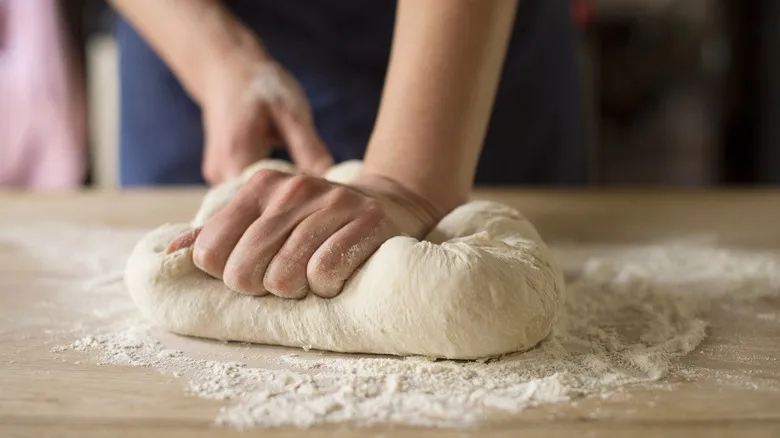
A frequent error that novice bakers make is mishandling the dough for an incorrect duration. As Paul Hollywood has consistently advised viewers and bakers on his shows, the secret lies in avoiding both overworking and underworking your dough. Excessive handling can lead to a rubbery texture, while insufficient kneading will also result in an undesirable consistency.
So, how can you achieve the ideal texture, and how do you determine when your dough has been kneaded just right? It might seem like a guessing game for beginners, but Paul Hollywood's Top Tips clarify the method: "To test if your dough is kneaded sufficiently, pull a piece of dough between your hands. It should stretch 20cm without tearing." Sounds simple enough, right? However, it may not be as easy as it appears, as demonstrated by many bakers on Hollywood's shows who struggle with this task. Nevertheless, the advice is clear. Keep this tip in mind the next time you knead dough, and you'll be thankful you did.
Keep salt and yeast apart when you first start mixing
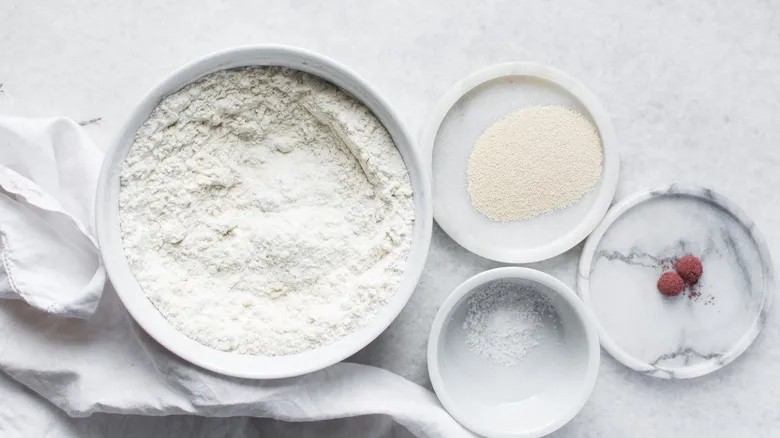
As you may be aware, there are numerous details to consider when mixing and kneading dough. While we've covered several aspects already, Paul Hollywood advises that you should keep salt and yeast separate when you first add ingredients to the mixing bowl for bread. Although it might seem a bit complicated and perhaps even unnecessary since all the components will eventually blend, Hollywood's guidance has proven reliable, so it's wise to heed his advice in this regard.
One of Hollywood's key baking tips states, "When mixing your ingredients for bread, always place the salt and yeast on opposite sides of the bowl, as salt can kill the yeast." This sounds quite serious, so it's important to take note. Surprisingly to many, salt does indeed harm yeast, which makes the method of combining them crucial. That's why Hollywood suggests starting with the flour in your mixing bowl. Next, add the salt and yeast, ensuring they remain on opposite sides. Gradually incorporate each into the flour individually without allowing them to mix. Only after that should you combine everything together. This approach protects the yeast and ultimately leads to superior baking results.
Use oil instead of flour to prevent sticky-hand syndrome
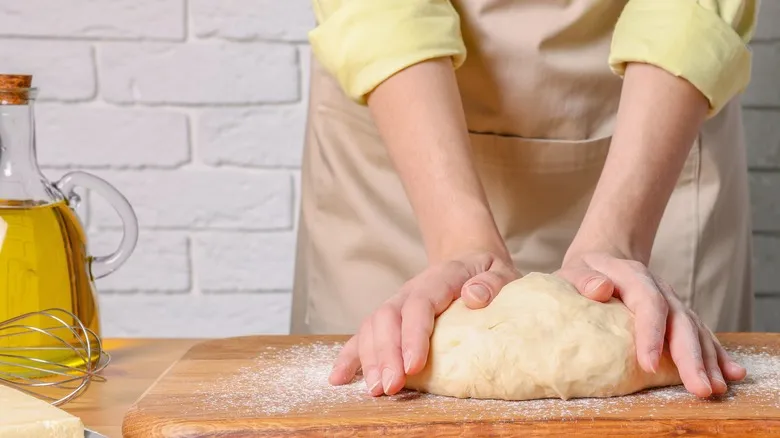
Sticky-hand syndrome is a challenge that every baker aims to avoid. While it's inevitable to encounter sticky hands at some point when handling dough, it's a common issue that can't be entirely eliminated. Fortunately, Paul Hollywood shares a helpful tip in his Top Tips list on his website: instead of dusting your kneading surface with flour, consider using oil instead.
According to Hollywood, using oil in place of flour "won't change the dough's consistency and will help minimize sticky-hand syndrome." It almost seems too good to be true, right? Flour is a staple for many bakers, and Hollywood uses it frequently as well. However, oil proves to be an effective alternative. If sticky hands are your least favorite aspect of baking (and many people dislike the mess), this simple trick could revolutionize your experience. Just be cautious not to overdo it, as too much oil could impact your final product. Remember, precision in ingredients is essential.
Warm milk before adding it to dough to prevent slowing down yeast
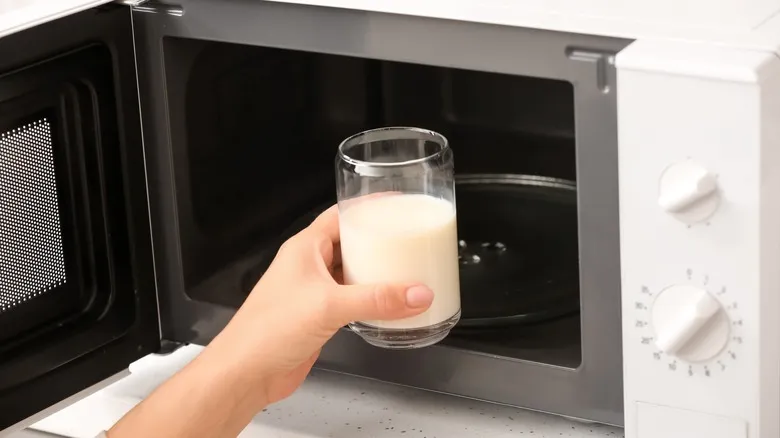
As you may already be aware, yeast can be quite particular. Everything needs to be just right for it to effectively interact with other ingredients. If conditions aren't optimal, your dough may not rise or bake correctly. To enhance yeast activity, Paul Hollywood suggests using warm milk in your recipes: "When incorporating milk into dough, ensure you warm it slightly first. The fat in the milk can slightly inhibit yeast activity, and warming it helps counteract this."
While using cold milk straight from the fridge isn't the best option, hot milk isn't ideal for your baking recipe either. Therefore, it's important to warm your milk gradually and only slightly. The optimal temperature for interacting with yeast is between 110°F and 115°F. To achieve this, microwave your milk for about 30 seconds, then check the temperature with a thermometer. If it’s not quite there, return it to the microwave for another short burst. Alternatively, if you don’t have a microwave, you can warm it in a pan on the stove over low heat. In either case, heat it until it reaches between 110°F and 115°F, but not beyond. If you accidentally overheat it, you can either start over or let it cool on the counter for a while.
Use room temperature eggs so you don't sting your dough with cold
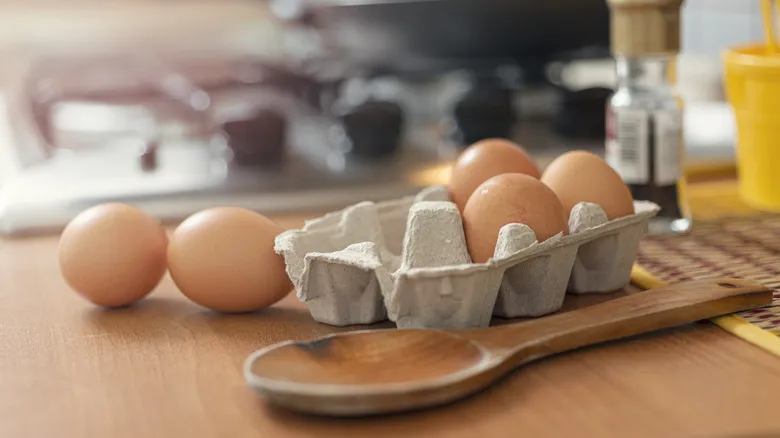
Another baking tip that Paul Hollywood strongly advocates is regarding the temperature of the eggs he uses. In an Instagram post, he states, "For me, I don't store my eggs in the fridge. I keep them outside, which is where they belong." This may seem quite surprising to many in the United States, where eggs are typically refrigerated, but it could be due to the milder, cooler climate in Great Britain. Nevertheless, Hollywood further explains, "Room temperature eggs incorporate into mixtures much better and won't negatively affect the mixture by being too cold."
While room temperature eggs are preferable for baking, how long can you safely leave them out? The U.S. Department of Agriculture (USDA) advises that eggs should not be left at room temperature for more than two hours due to the risk of salmonella. They clarify, "A cold egg left out at room temperature can sweat, which allows bacteria to enter the egg and promotes bacterial growth." To mitigate safety concerns, one effective method to bring your eggs to room temperature for baking is to soak them in warm water. This method raises their temperature much more quickly than simply leaving them on the counter. Given the two-hour time limit, this approach seems like a wise choice.
Tin loaves are an amateur bread baker's friend
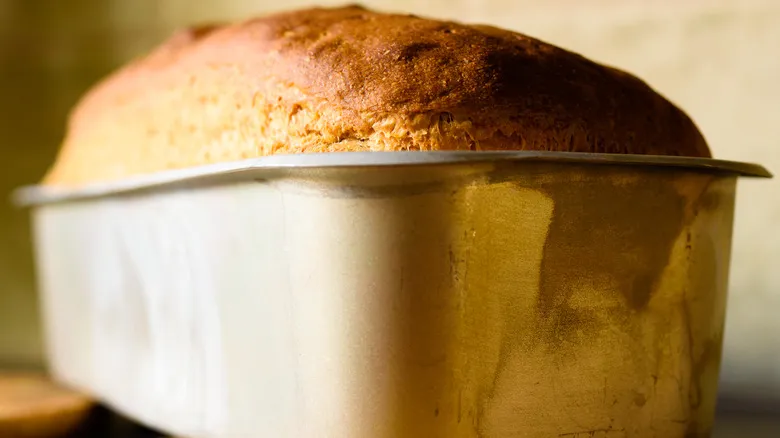
Another baking tip that Paul Hollywood suggests for novice bakers is to use tin loaf pans when making bread to achieve the right shape. As he mentions in his Top Tips, "When making bread for the first time, always use a tin so you can focus on perfecting your dough." Using a tin allows your dough to rise properly during baking, providing significant assistance with the final shape. Hollywood further advises, "Once you've mastered your dough, then you can experiment with free-form loaves."
When you watch videos of people baking bread on Instagram and TikTok, you often see them crafting stunning creations in various shapes, sizes, and styles. They make it seem incredibly simple. However, for a first-time or relatively inexperienced home cook venturing into baking, the reality is that it’s not as easy as many famous influencers, including Paul Hollywood, might suggest. Making bread from scratch can be quite challenging for most amateur bakers. While some may experience a bit of beginner's luck, the rest of us appreciate any assistance we can get.
Recommended
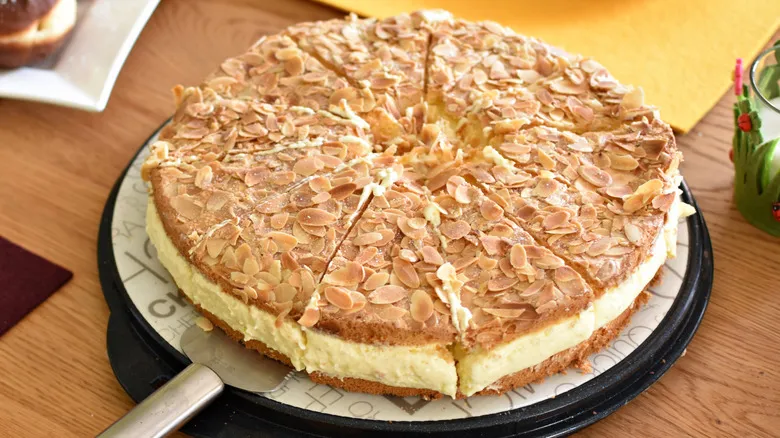
Bee Sting Cake Is The Perfect Way To Add A Something Sweet To Your Oktoberfest

Expert Tips For Bakery-Worthy Chocolate Cake
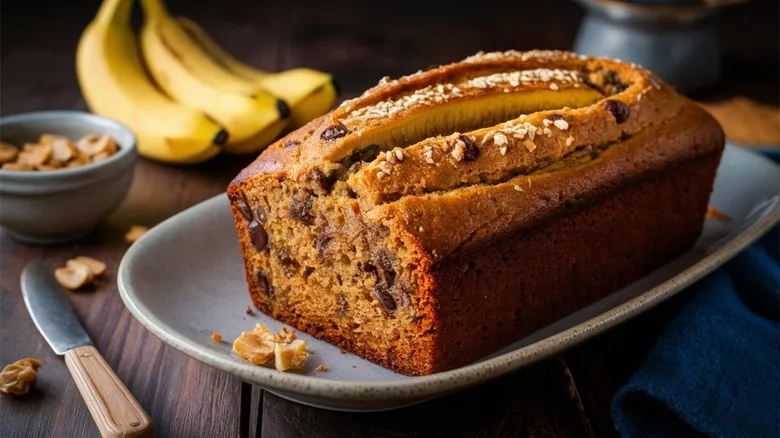
The Additional Fruit You Should Add To Improve The Flavor Of Banana Bread
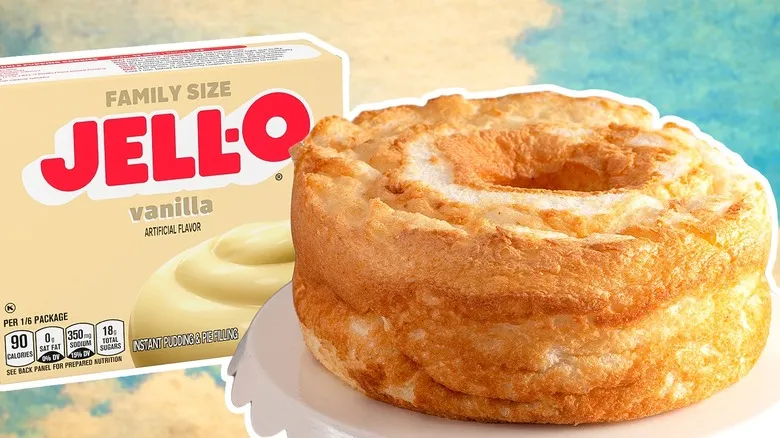
Instant Pudding Mix Is The Secret To A Boston Cream Pie-Inspired Angel Food Cake
Next up

